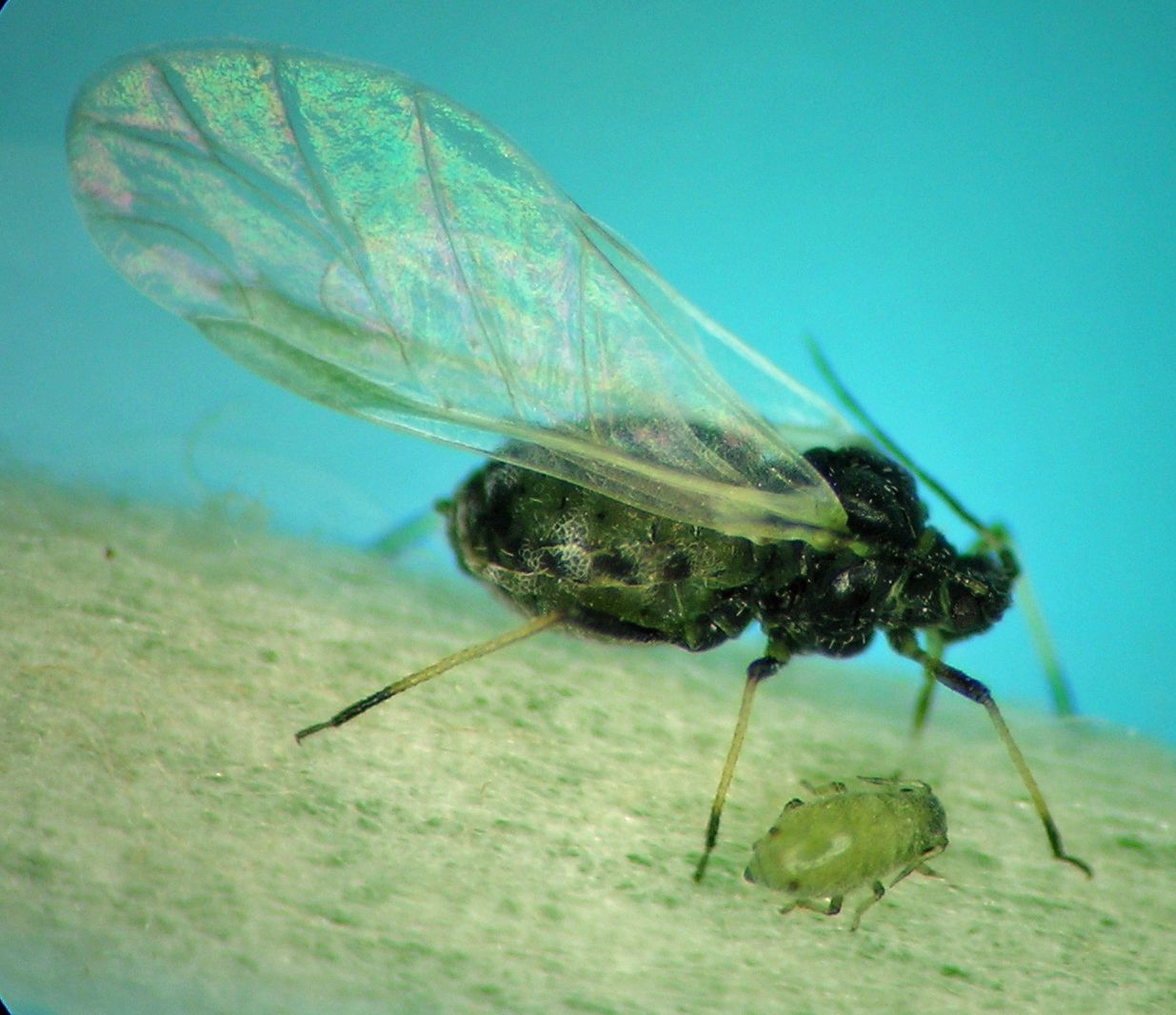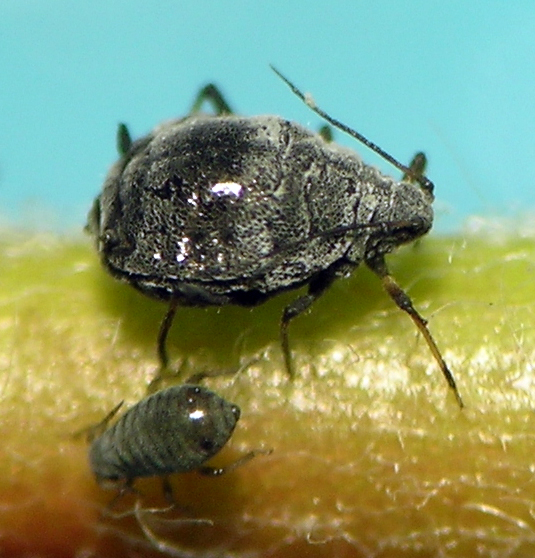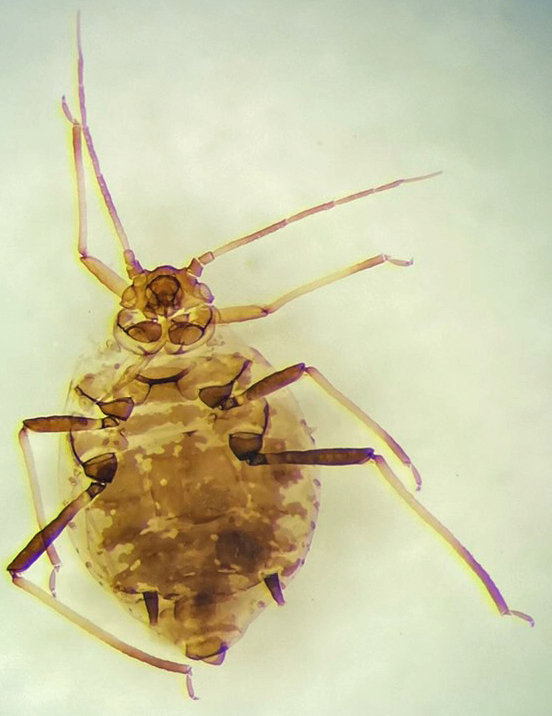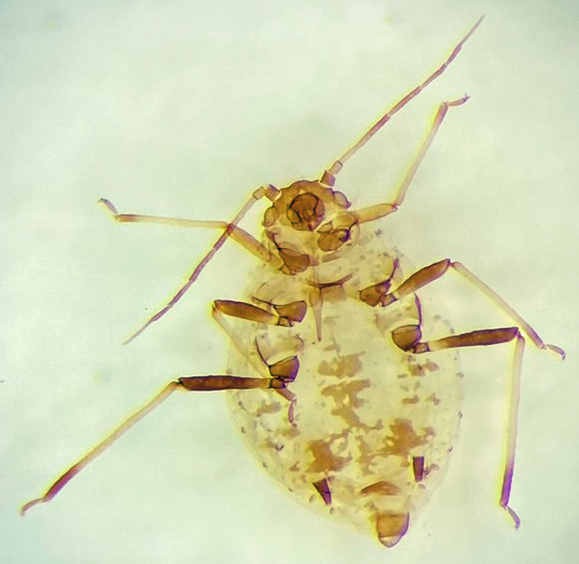Braggia Gillette & Palmer
This page updated: December 2024.
Up until 2009, this genus was poorly studied, with species that were undescribed and others difficult to recognize. My long-time colleague Keith Pike at Washington State University led an effort to describe some new species and to write a key to species. These aphids live on Eriogonum, commonly known as wild buckwheats. The genus is related to Aphis.
For many years I had been puzzled by the placement of these aphids in their own genus when they are basically Aphis with short siphunculi that live on Eriogonum. Then in 2023 I found the type species of the genus, Braggia echinata Gillette and Palmer on an Eriogonum here in western Colorado. Once slide-mounted, these specimens made it obvious why this genus was established in 1929 — the cauda is almost imperceptible. In fact, when examining the first several specimens, I thought that I had somehow ripped off all the caudas during slide mounting. Palmer (1952) describes the cauda of this species as follows: “Cauda broadly semi-circular to triangular resembling a body segment.” An apt description. Anyhow, now I understand that the genus was created for this very unusual species and then other Eriogonum-feeding Aphis-like species were added to it based on biological and morphological similarities apart from the cauda.
Braggia columbiana Pike
This is one of the Braggia species recently described by Keith Pike. Before Keith’s paper, I did not file Braggia with species names in my collection, preferring to leave the specimens with only genus name. His paper brought the situation into a lot better order. Probably I should take more photos of Braggia, as I have collected 5 species but only have photos of one of them. I have samples of B. columbiana from the Columbia River gorge area of Washington and Oregon, plus one sample from central Washington.
Braggia echinata Gillette & Palmer
This, the type species of Braggia, is a most unusual aphid, as mentioned above, with a very reduced, almost unrecognizable, cauda. I had not found this species until late summer of 2023 after some summer moisture allowed one of the really and truly desert-adapted Eriogonum in western Colorado to bloom abundantly. This aphid does as many aphids can do: go from apparently incredibly rare or spotty to being everywhere its appropriate host is growing. That was the case late summer of 2023 in the desert near Delta, Colorado. I found it once during fall of 2024 as well, with all my samples being from near home in western Colorado.
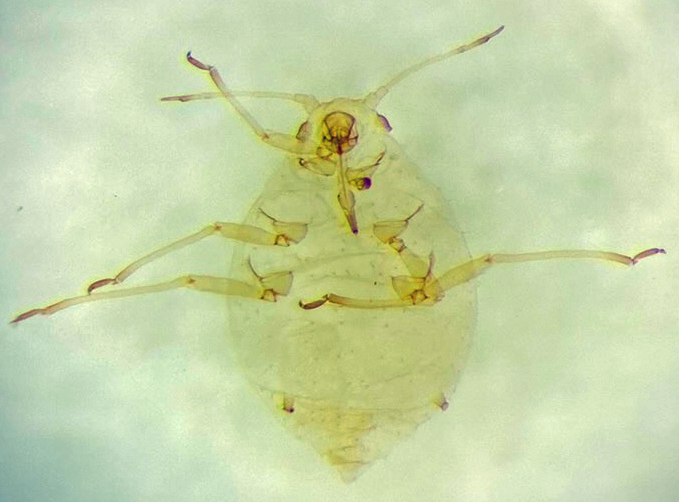
Braggia eriogoni (Cowen)
This is by far the most common species of Braggia when taking the whole of western U.S. into consideration. It seems to tolerate many species of Eriogonum as host and many habitat types from lowland deserts to mid-elevation mountain slopes. It often forms incredibly dense colonies on its host plants. As noted by the photos below, it is also frustratingly variable in shape and color of preserved specimens.
I have material from Washington, Oregon, California, Idaho, Nevada, Wyoming, Colorado, and New Mexico.

